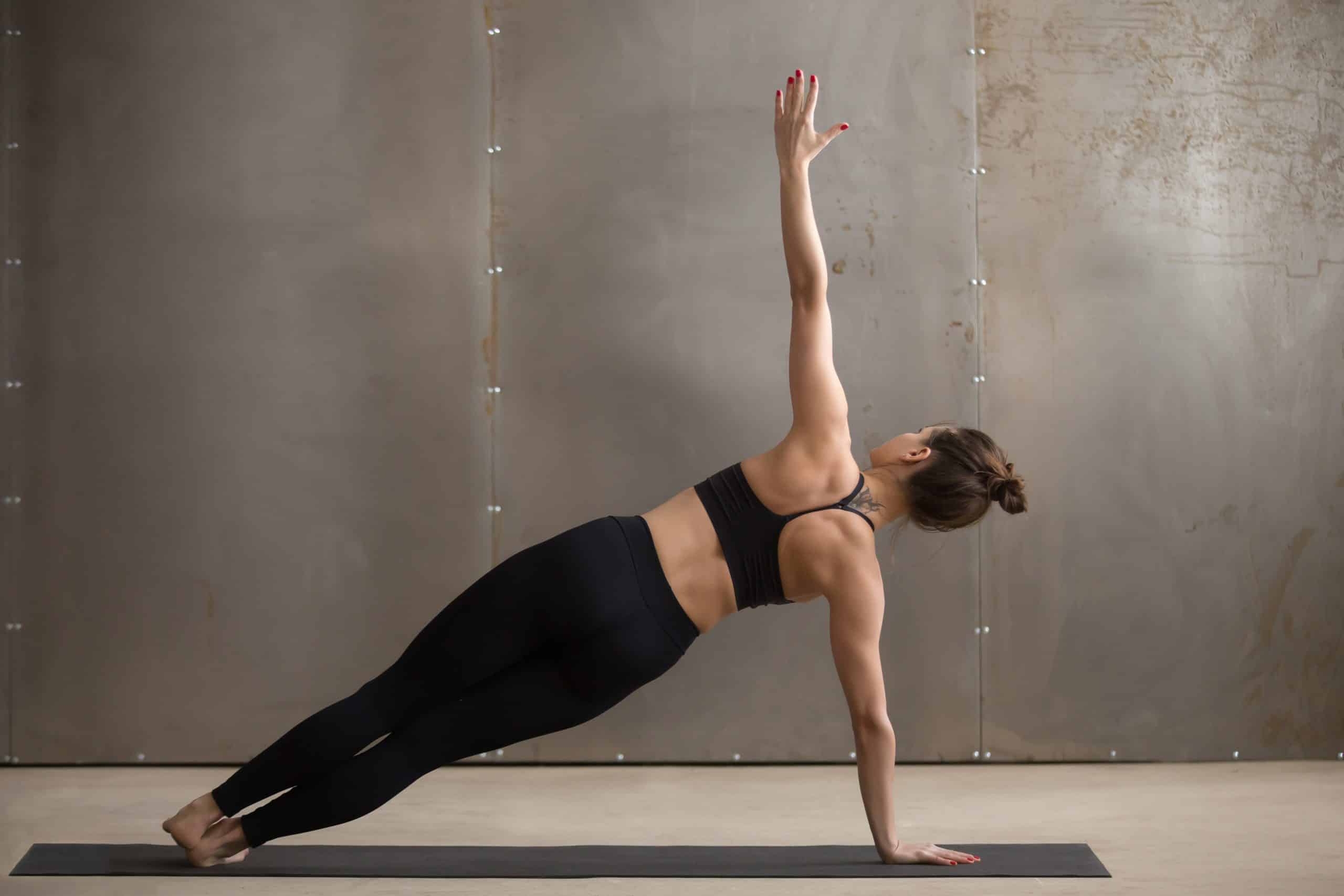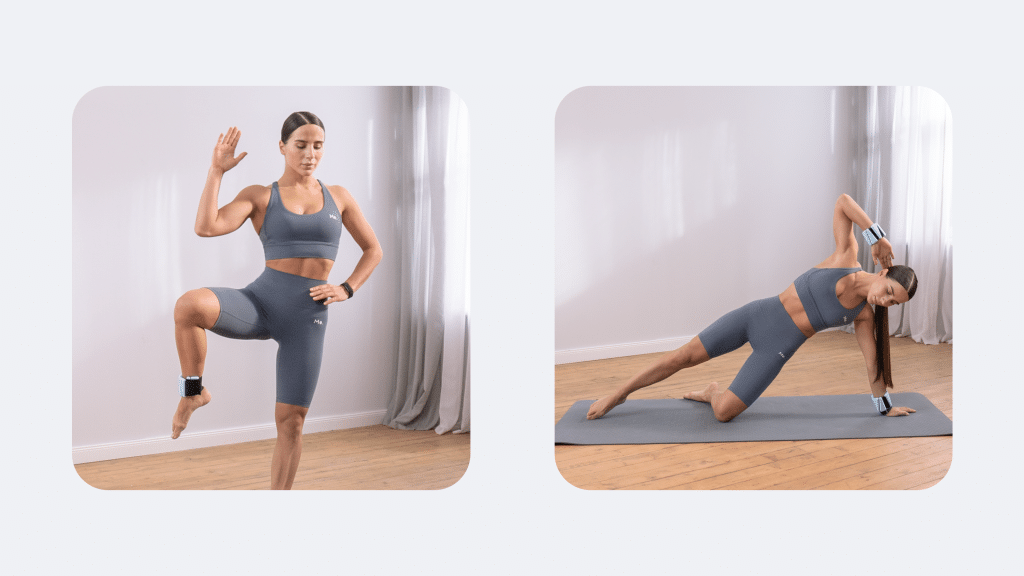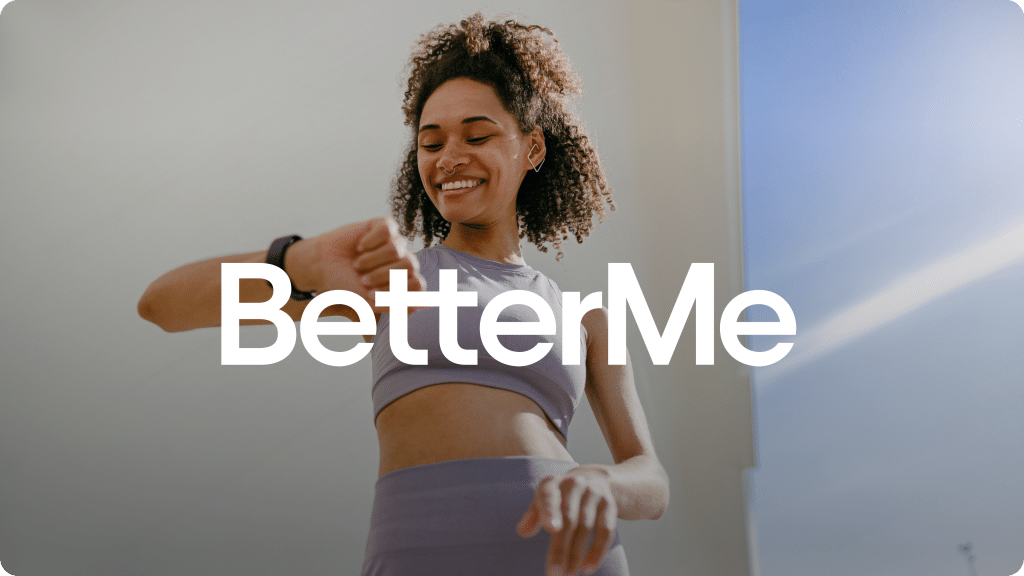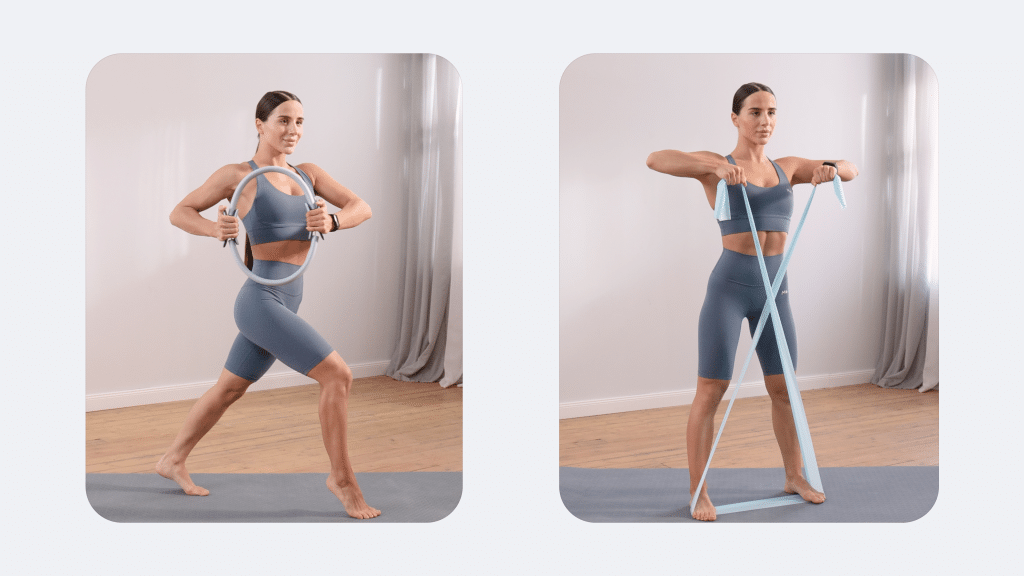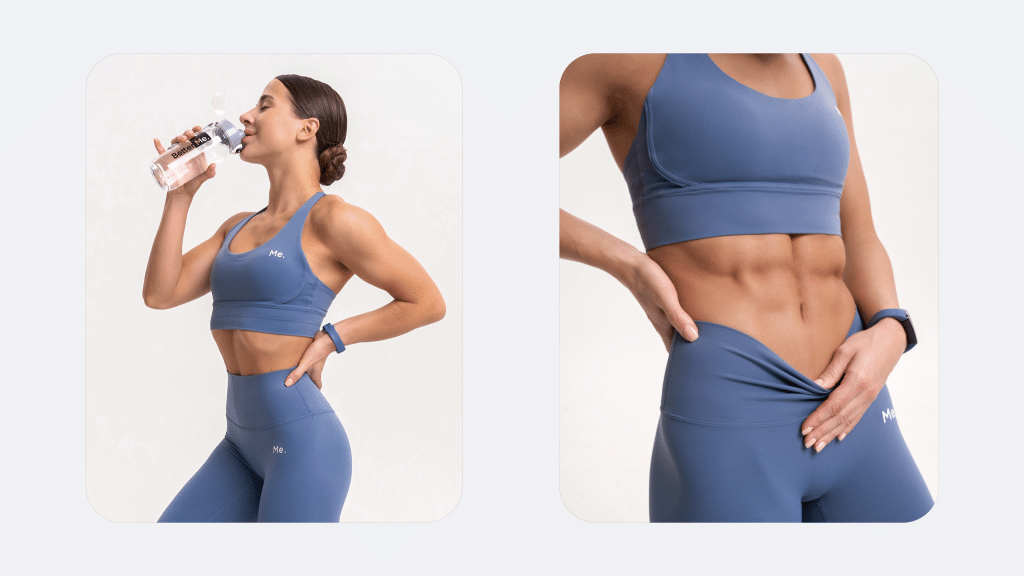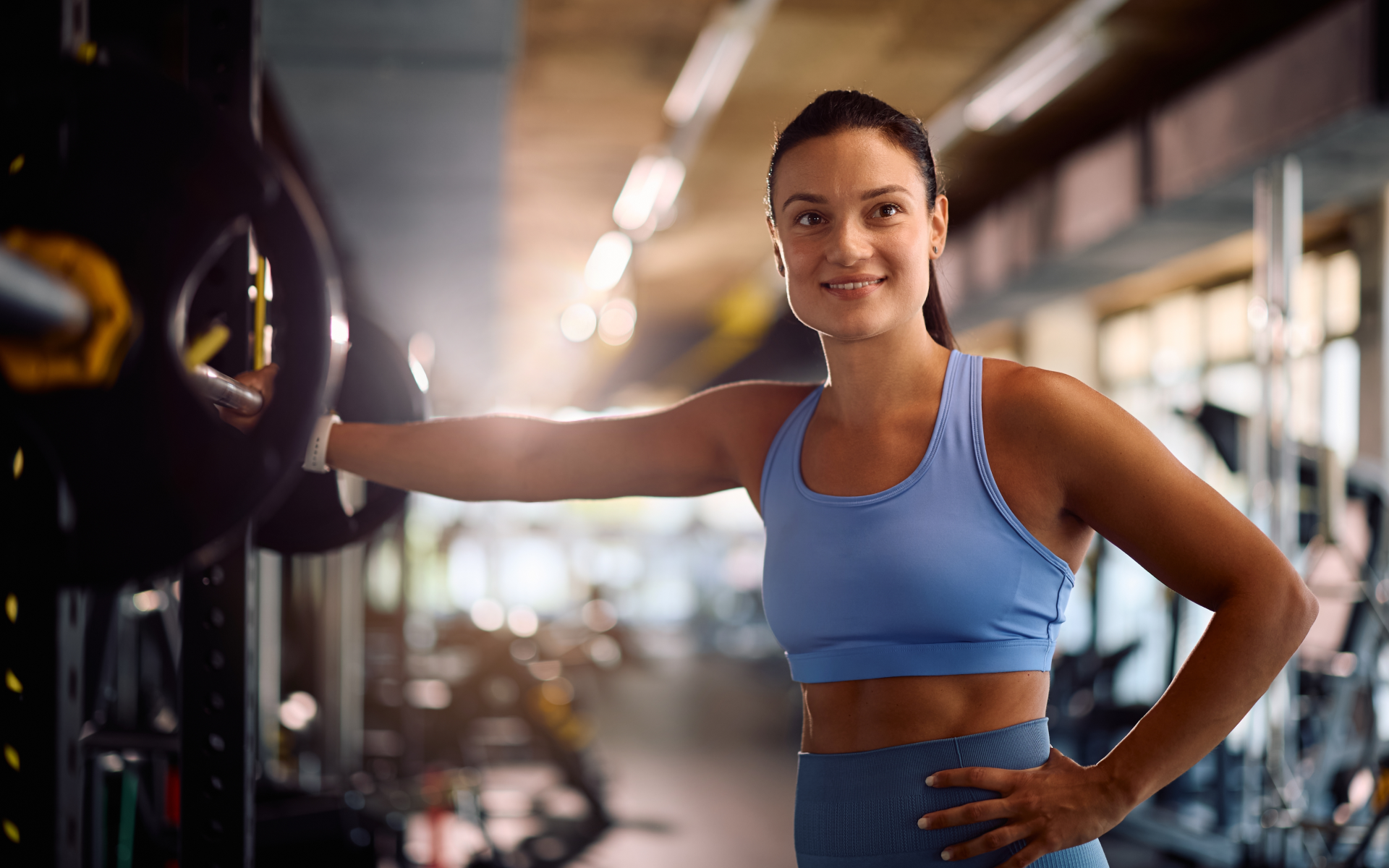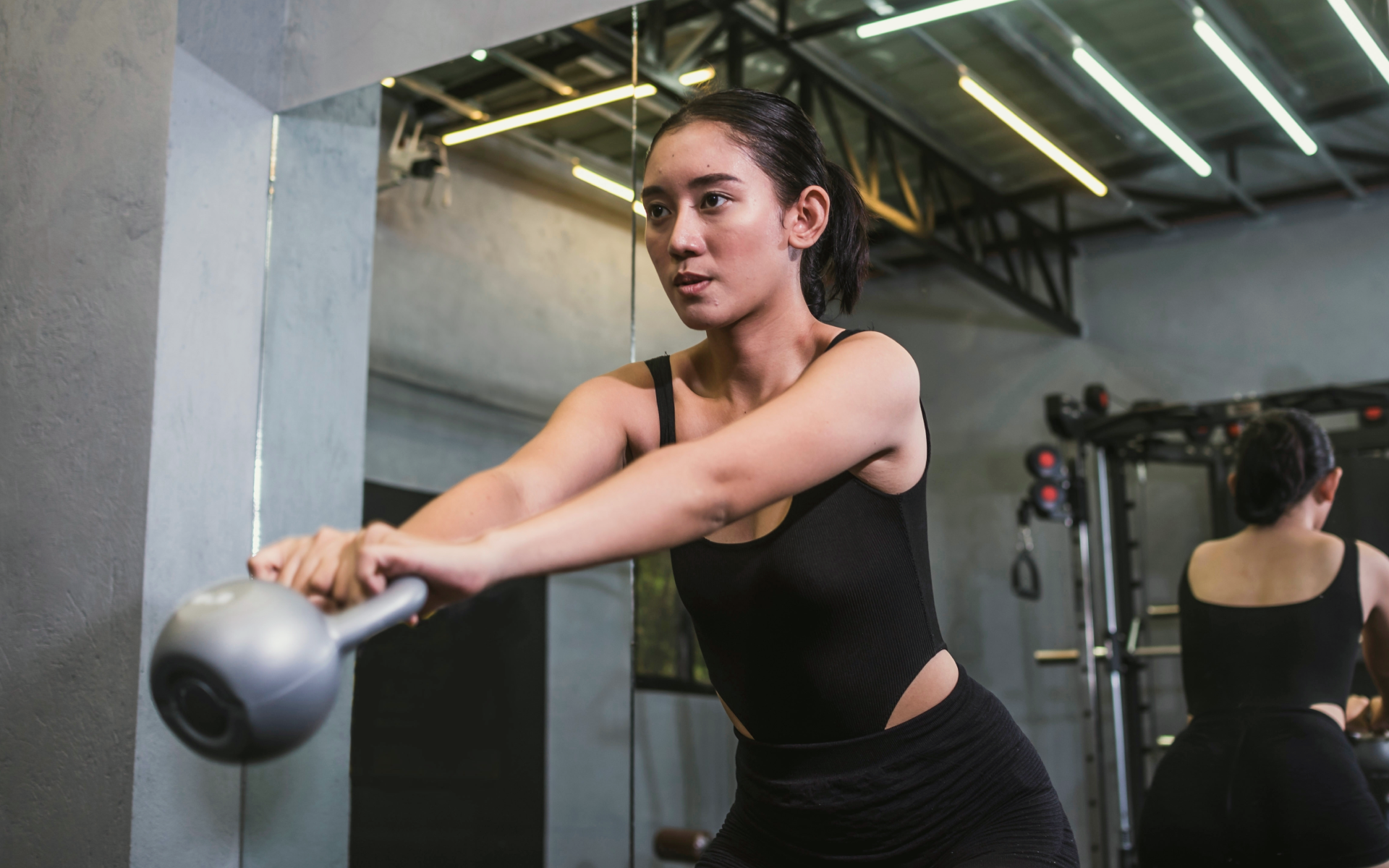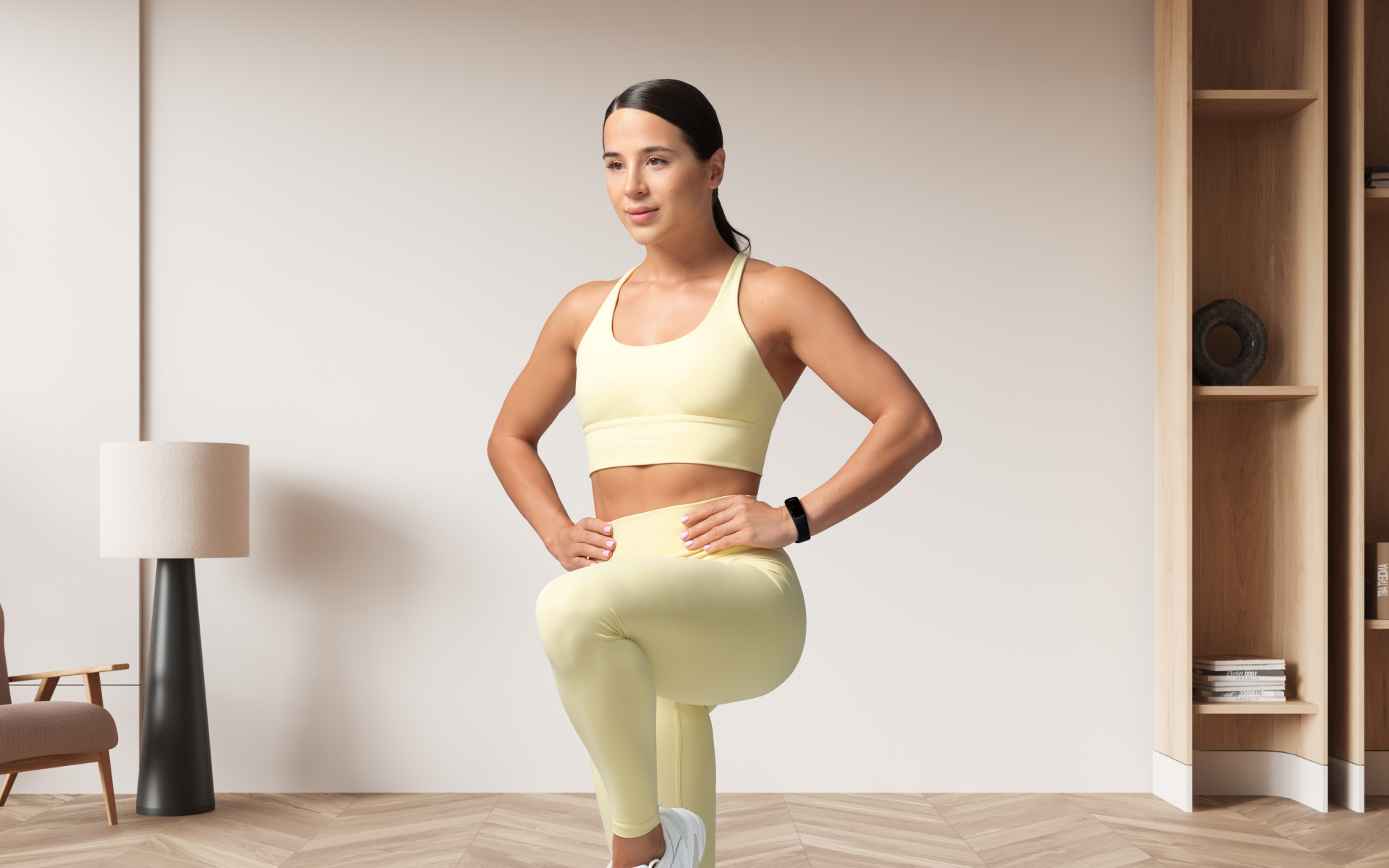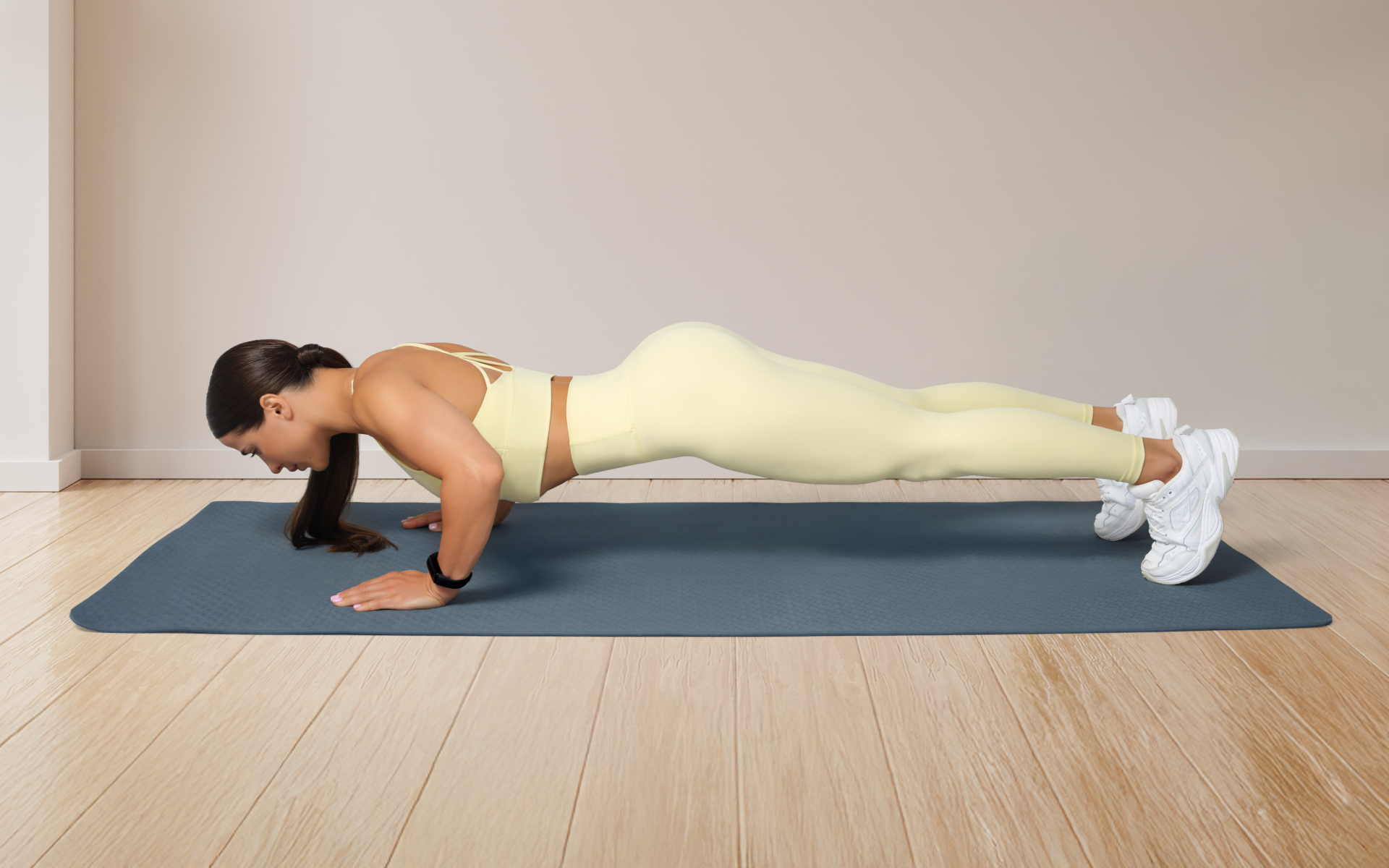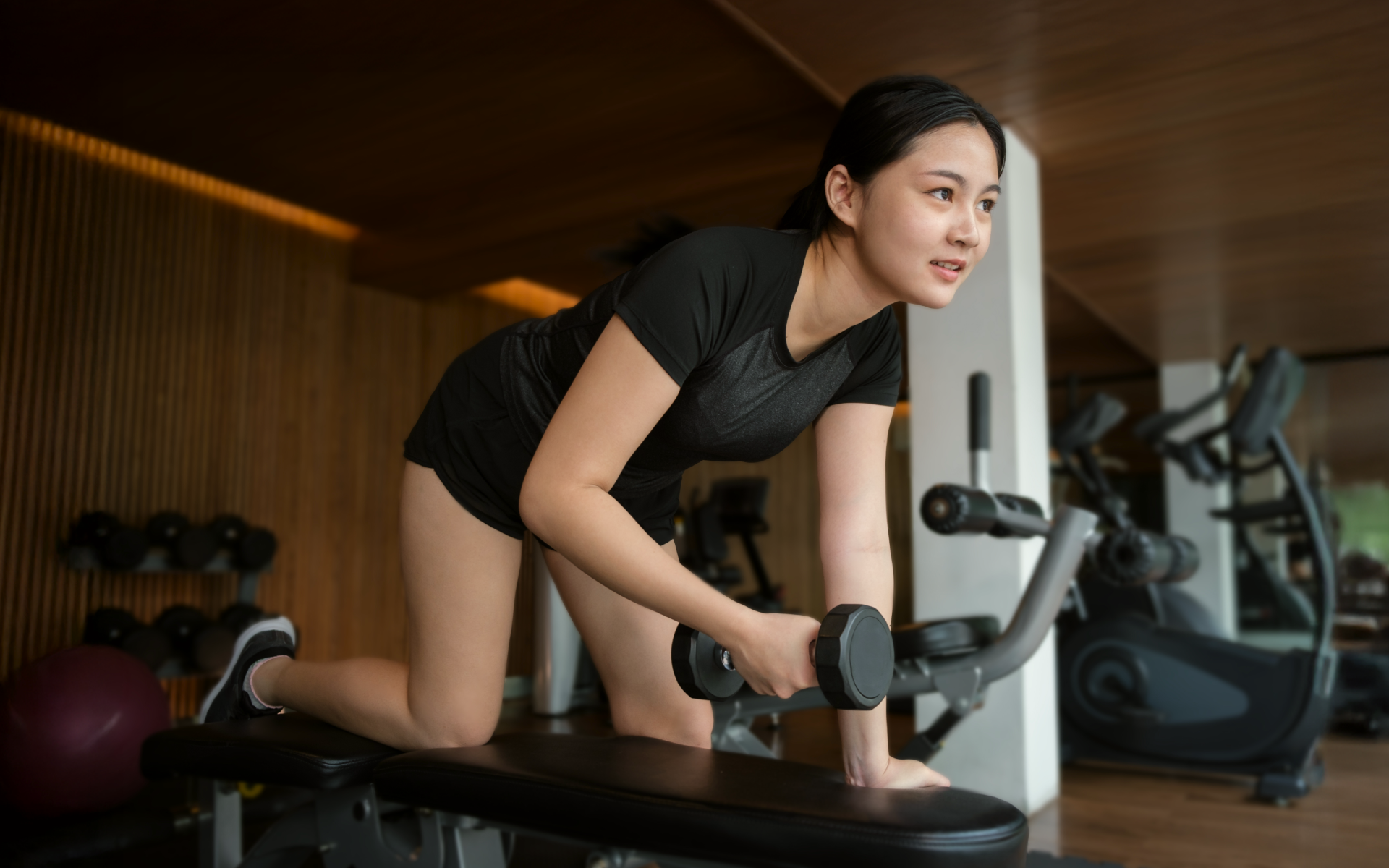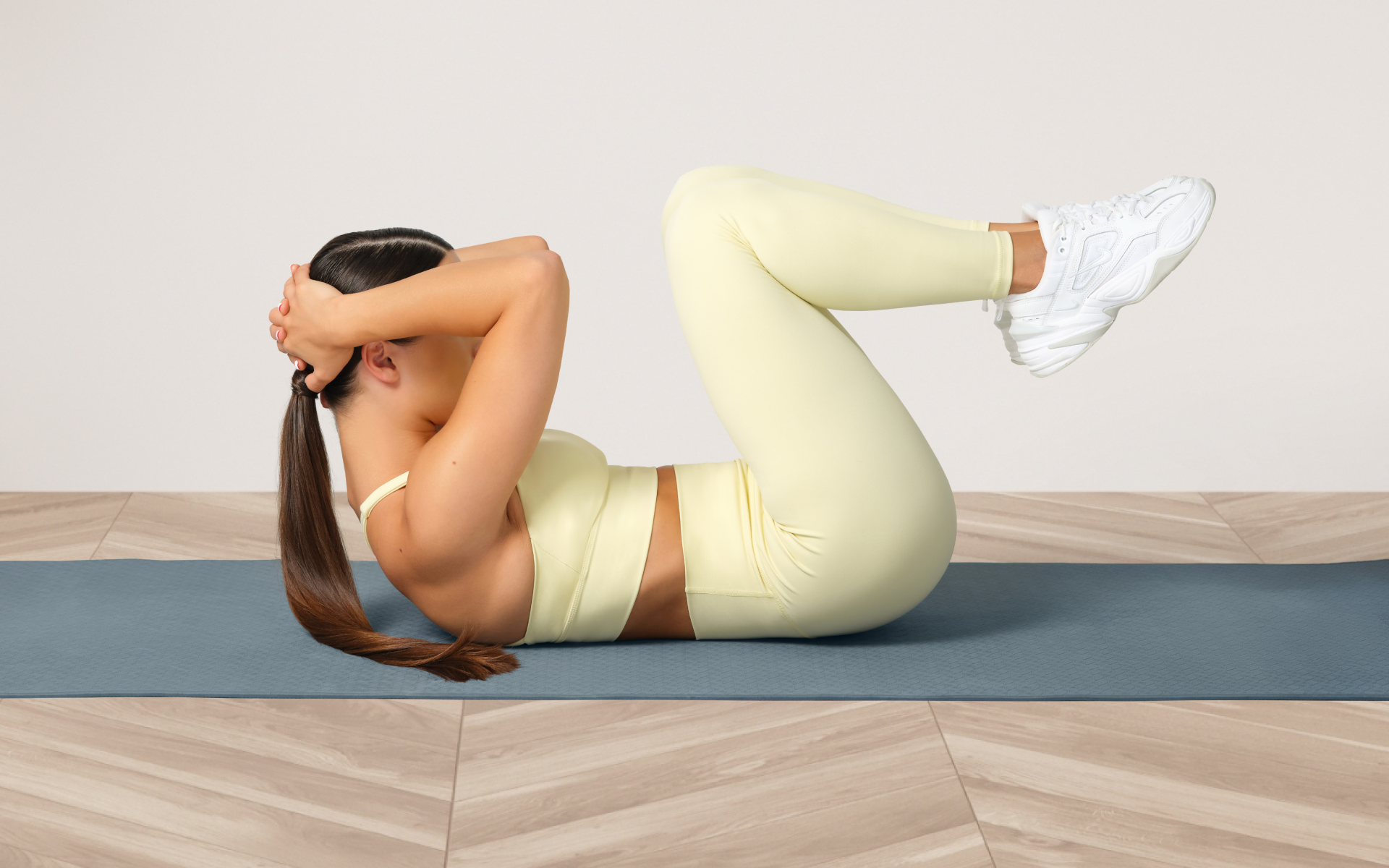Those muscles that help you twist and bend are known as the obliques. These are often overlooked when looking for ways to build a strong core – but they are super important!
Strong obliques not only make you look good, but they can help to keep your back safe (1). The oblique muscles are located at the lateral sides of the abdomen, running from below the chest to the top of the hips. These are formed by two muscles – the internal and the external obliques. Their primary function is to help a person turn and rotate their trunk, spine, and core, and in contrast, resist rotation as well (8).
Apart from helping you bend and rotate, oblique exercises can also help you enhance your performance in sports and daily activities. This means that to define your waistline and say goodbye to the love handles, you should look for the best oblique exercises (along with an adequate diet).
Some oblique exercises which could help your workouts become more effective are covered in this article.
Below, we dig into some oblique exercises and how to train the overlooked muscle group effectively. Dig in!
What is the Best Exercise for Your Obliques?
You can engage obliques with any movement that includes internal or external rotation around the center of your body. Your range of motion is essential in how much you engage your obliques in these movements (3).
Remember that you don’t have to use a lot of weight to get the rewards of oblique exercises. Many exercises simply rely on your body weight. Even the weighted ones should be performed carefully, as there is a risk of injuries. The best technique is to focus on the time spent under tension and increase the motion range.
In this article, you can find oblique exercises that can be performed without equipment and those that can be performed with weights. We aim to highlight different variations so that practitioners at every level can choose a workout according to their skill level.
Most oblique exercises that are done without equipment can stimulate significant muscle activation through surface electromyography (EMG) (6). EMG, in its essence, is the gold standard for evaluating muscle activity.
Bicycle Crunch
This exercise activates many of your core muscles. This exercise triggered greater oblique activation during the EMGs than any other exercise. The bicycle crunch was called the best abs exercise by an ACE-sponsored study in 2001 (4). This exercise can stimulate your upper and lower abs and the obliques.
To perform the bicycle crunch, you have to:
- Lie flat on your back with your lower back pressed against the floor.
- Tighten your tummy muscles and lift your legs just off the ground.
- Bend your right knee and bring it towards your chest.
- With your hands behind your head, try to reach your left elbow towards your right knee, twisting your body slightly. Don’t worry if your elbow doesn’t quite touch your knee. Just focus on turning your sides as much as possible.
- Slowly lower your legs and knee back down, then repeat the same movement with your left knee and elbow twisting towards your left side.
- Do this for about 15 repetitions.
BetterMe is your fast-track ticket to a long-lasting weight loss! Tailor your fitness journey and maximize your results with just a couple of swipes!
V-Sit
A study conducted in 2013 that was published in the Journal of Sports Science and Medicine discovered that this exercise can initiate the highest activity in the exterior oblique muscles (7). It can work multiple areas of your core simultaneously, while the body holds a static position in the shape of a V.
Here are the steps to do a v-sit:
- Sit on the floor with your legs bent.
- Tighten your belly muscles, straighten your legs, and lift them slowly until they’re halfway toward standing up.
- Straighten your back and stretch your arms forward to help you stay balanced.
- Keep your tummy muscles tight, your back straight, and your shoulders pulled back.
- Hold this V-shaped position for about 10-15 seconds, trying to hold it longer each time.
Side Plank
Side plank is one of the many oblique exercises for beginners. Even the gym geeks can include this into their workout regime to give those core muscles the nudge they need. This moves the side abs, the upper body, and a muscle called gluteus medius, an important stabilizer for the pelvis (12).
To perform a side plank:
- Lie on your left side, on the ground.
- Prop yourself up on your hand or forearm to lift your upper body.
- Bend your knees and put your right leg on top of your left leg. Or, if you’re strong enough, you can straighten your legs and stack your feet.
- Depending on your setup, your body should have a straight line from your head to your knees or toes.
- Keep your feet together and use your side muscles to lift your right hip toward the sky. Your right arm can rest on your side or reach overhead.
- Stay like this for as long as you like, then switch sides.
Russian Twist
This exercise can build your core and shoulder strength (9). It is thought to be named after one of the exercises designed for Soviet soldiers in the Cold War. Its popularity today makes it among the universal exercises.
Here is how you can perform the Russian Twist:
- Sit on the floor with your knees bent and feet flat.
- Lean back and lift your feet off the ground, balancing on your tailbone.
- Stretch out your arms and twist your body to the right, letting your arms drop.
- Twist back the other way, dropping your arms to the left.
Read more: Thigh Workout Guide: 7 Effective Exercises for Building Leg Strength
Do I Need to Train Obliques?
Since the obliques run down the sides of your midsection, hypertrophying these muscles can widen the waistline (15). This is highly possible if you are performing oblique exercises with weights. Fortunately, you are less likely to expand your waistline if you opt for lighter weights. The benefit of oblique-focused exercises is that you can have a balanced core workout.
Here are some perks you can enjoy with oblique stretches and exercises:
They Can Provide Stability
The obliques provide stability to our core, and can help resist unwanted rotation. This can eventually help to maintain the correct posture (15). This is especially important when you are performing exercises like deadlifts and squats. When the obliques are strong, you are less susceptible to getting injured during these movements. Remember that your upper body depends on the proper posture to support itself. The obliques are like the two pillars holding each side, so working on these is essential to maintain stability.
They Can Support Flexion and Rotation
Your oblique muscles control rotation from top down to bottom up. They can flex you from one side to the other and from bottom up or top down (3).
Rotation and flexion are the two movements you need beyond the gym. Think of how you move during your daily routine. Bending and twisting in daily activities like picking up kids or bags or doing yardwork is a part of our lives. These tasks can become more manageable if you perform oblique exercises at home.
They Can Sculpt Your Waistline
Working on your oblique muscles is necessary to bring out those six-packs or get that coveted V-cut (2). Without shaped obliques, your core may not have the defined look. When you work on your obliques with external and internal exercises, you can get a chiseled waistline within a few weeks.
They Can Enhance Your Mobility
Mobility is the body’s ability to perform various moves. It comprises your muscular strength, motion range, and flexibility. Although muscle and strength training are the correct fitness goals, focusing on oblique exercises can also improve your performance. These exercises can build your flexibility and strength in the area that gives you the maximum motion range (14).
To sum up, by including exercises that target your obliques, you can support healthy movement and other functions of the body. Some ab-focused exercises we usually perform, like side plank hip lifts and bicycle crunches, can also work on your abs. Since we don’t use weights during these exercises, we are less likely to develop obliquely or have a boxy-looking waist.
How Do You Train Obliques With Weights?
Research has revealed that your abs and obliques can show up if you have a low body fat percentage (5). Performing oblique workouts with weights is one of the best ways to define your core within a few days.
The following section covers oblique exercises performed with gym equipment. Use them to curate a fruitful routine at the gym.
Farmer Carry
This exercise can potentially improve your conditioning and muscular strength (10). You can vary the loads to hit different intensities according to your fitness level. During this exercise, you can carry dumbbells of various weights or two different objects. Carrying different-sized weights can increase instability in your walk, which is suitable for building your strength.
Here is how to perform a farmer’s carry:
- Stand in the middle of two things you can hold onto.
- If you have farmer carry bars, that is great. If not, kettlebells, dumbbells, or a trap bar will do.
- Bend down and pick them up like you’re about to lift something heavy.
- Stand up straight while holding onto them tightly.
- You can put them on something high to make it easier to pick up.
- Keep your back straight and walk slowly and carefully.
- Look straight ahead and pull your shoulders back as you walk.
- Walk for the amount of time or distance you have decided on.
If you’ve mustered up the courage to crush your weight loss goal, let Betterme take the sting out of this demanding process. Our app will help you restructure your habits, remold your life and crank up your fitness results!
Single-Arm Side Deadlift
This variation of deadlift simply involves performing a deadlift with a single implement. The side that doesn’t hold anything will be compelled to fight against resistance by pulling it sideways.
Recall what we mentioned earlier!
Flexing and rotating are suitable for the core, but it is designed to resist these movements. This makes them genuine functional training.
Follow these steps to perform a single-arm deadlift:
- If possible, arrange an object with a handle, like a farmer’s carry bar. The higher handle can be handy for better grip. The shorter distance can be a plus since you are doing this move multiple times.
- Bend your hips back, lowering your body until you grab the handle. Even though one hand is free, let it hang naturally by your side or pretend it’s holding something light to keep your form in check.
- Get into a regular position, as if you’re about to lift a trap bar.
- Now, rise by pushing through your legs and straightening your hips.
Remember these key points:
- Keep your shins pretty much vertical.
- Your shoulders should be a bit in front of your knees.
- Let your arms hang down, following the line of your shins.
- Keep your shoulder blades pulled back and your shoulders straight.
Barbell Rollouts
This one is considered to be among the best exercises for the core. The original form of this exercise or its variations can trigger maximum activation for all core muscles, including the obliques (11). They can also work along with other core muscles to provide maximum stability to the core. You can add more plates to increase the load, making it an exercise that fits various fitness levels.
To perform a barbell rollout, you have to:
- Decide if you want to exercise on your knees or standing up.
- Get a barbell ready with weights that won’t wobble under your weight. Don’t use lightweight plates because they are too shaky.
- Hold the barbell with your hands wider than your shoulders, palms facing down.
- If your shoulders are stiff, grab the bar wider. But also work on making them more flexible!
- Slowly let the barbell roll forward, and let your body follow.
- Keep going until your hips need to straighten and the barbell goes in front of your head. That’s when it gets tough!
- Keep going until the barbell is in front of your head. Go down as low as possible, aiming to level your shoulders with your torso.
- To come back up, tighten your belly and pull yourself back in.
You should learn the correct form before creating a workout plan focusing on your obliques. Like many exercises, there is no difference between oblique exercises for women and men. The only requirement is to train the core frequently enough. You can witness better outcomes by performing the same core exercises more frequently.
This is to say, instead of having four core exercises on the same day, perform one core exercise during four sessions. This helps to maintain consistency and keeps you from feeling tired.
What Are the Side Oblique Muscles?
Oblique muscles have a slanted orientation. The slanted direction refers to the direction of these muscle fibers. The direction of the fibers of the obliques follows the direction of reaching across the body. This means that when you place your hand on the opposite side of the abdomen, your fingers will represent the direction of fibers (13).
There is another pair called the external obliques. The fiber direction of these muscles resembles the direction of reaching into the pockets. The function of these abdominal muscles is to stabilize your body.
When they work together, they bend your body and press everything inside. When they work on just one side, they bend your body sideways and twist it to that side. External obliques, another set of muscles, also work in two ways: on both sides or just on one side. When they work together, they bend your body and press everything inside. But when they work on one side, they bend your body sideways and twist it to the other side.
Read more: 10 Best Glute Exercises To Add To Your Routine and Why
FAQs
How can I get obliques fast?
To get obliques fast, perform exercises that target the side muscles. These include the side bends, Russian twists, and oblique crunches. Also, combine these exercises with a healthy diet and workout routine to get the best results.
How can I tone my obliques fast?
To tone the obliques fast, perform exercises like wood chops, side planks, and bicycle crunches. Don’t forget to focus on a healthy diet and regular cardio to see better results.
How do I make my obliques bigger?
Strength training exercises like cable twists, side bends, and oblique crunches. You can progressively increase the weight and intensity over time to stimulate muscle growth. Make sure you have enough calories and protein to boost this enhancement.
How do you get V-shaped obliques?
To do this, you should perform targeted exercises and reduce body fat. Maintain a balanced diet and incorporate cardiovascular exercise to reduce overall body fat. This can reveal the muscle definition in your obliques. Consistency and patience are vital to achieving a V-shaped appearance from your obliques.
The Bottom Line
Oblique exercises vary from beginner to advanced level. Working on these muscles can provide many different benefits. They aren’t only helpful in athletic performance, but also can make daily activities easier.
However, before you begin, you should get assistance from a certified trainer. They can guide you about the correct form and frequency. Now, don’t think anymore. Get up and start bending those muscles today!
DISCLAIMER:
This article is intended for general informational purposes only and does not serve to address individual circumstances. It is not a substitute for professional advice or help and should not be relied on for making any kind of decision-making. Any action taken as a direct or indirect result of the information in this article is entirely at your own risk and is your sole responsibility.
BetterMe, its content staff, and its medical advisors accept no responsibility for inaccuracies, errors, misstatements, inconsistencies, or omissions and specifically disclaim any liability, loss or risk, personal, professional or otherwise, which may be incurred as a consequence, directly or indirectly, of the use and/or application of any content.
You should always seek the advice of your physician or other qualified health provider with any questions you may have regarding a medical condition or your specific situation. Never disregard professional medical advice or delay seeking it because of BetterMe content. If you suspect or think you may have a medical emergency, call your doctor.
SOURCES:
- 10 core exercises that are better for your back (and body) than crunches (n.d., nbcnews.com)
- 10 Exercises That Help You Get V-Cut Abs (2019, healthline.com)
- Abdominal Muscles (n.d., physio-pedia.com)
- American Council on Exercise (ACE)-sponsored Study Reveals Best and Worst Abdominal Exercises (2001, acefitness.org)
- Can You See Sculpted Abs If You Have a Low Body Fat Percentage? (2021, healthline.com)
- Comparison of the Electromyography Activity during Exercises with Stable and Unstable Surfaces: A Systematic Review and Meta-Analysis (2024, ncbi.nlm.nih.gov)
- Core Muscle Activity during Physical Fitness Exercises: A Systematic Review (2020, ncbi.nlm.nih.gov)
- External Abdominal Oblique (n.d., physio-pedia.com)
- How to Do a Russian Twist (2022, webmd.com)
- How to Do the Farmer’s Carry: Benefits and Expert Tips (2024, barbend.com)
- Muscle Activation Pattern During Isometric Ab Wheel Rollout Exercise in Different Shoulder Angle-Positions_2015 (2015, researchgate.net)
- Pelvic Stabilization, Lateral Hip and Gluteal Strengthening Program (n.d., uhs.princeton.edu)
- Pennate Muscle (2004, sciencedirect.com)
- Range of Motion (n.d., physio-pedia.com)
- Should You Train Your Obliques? (n.d., cathe.com)
